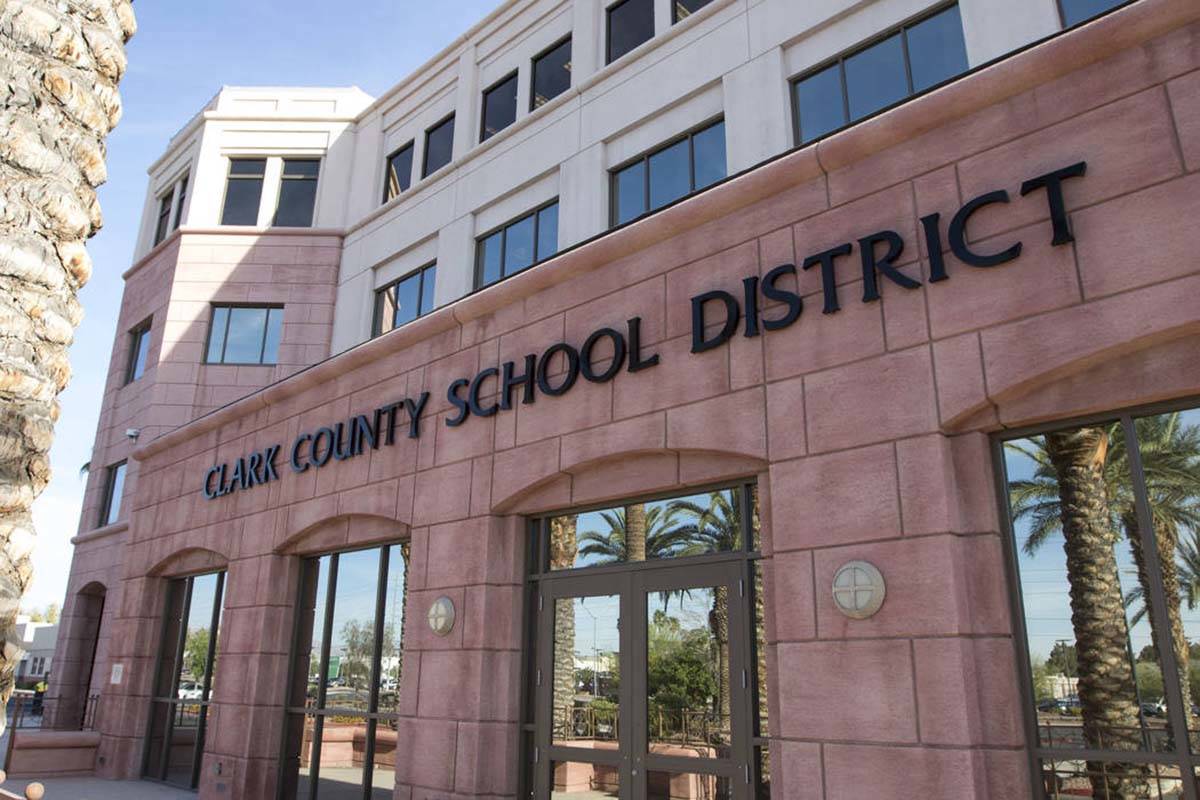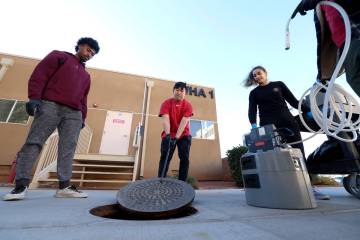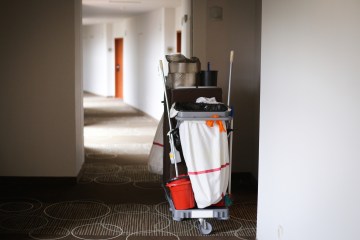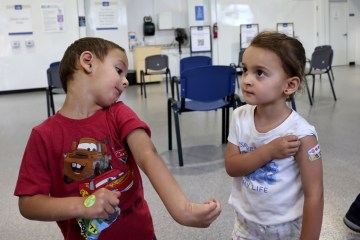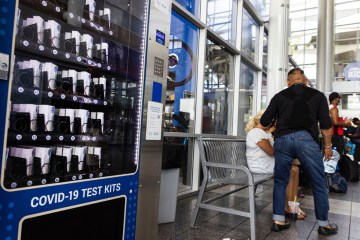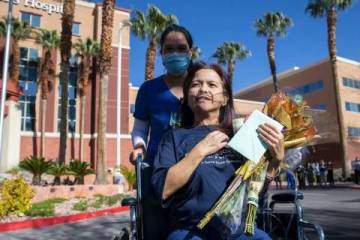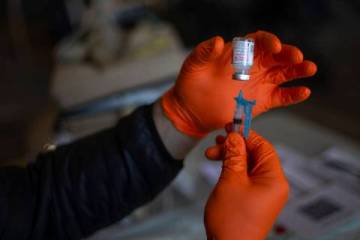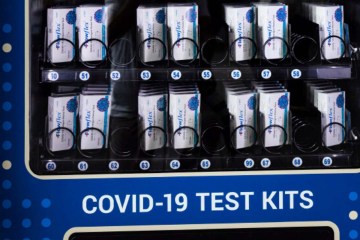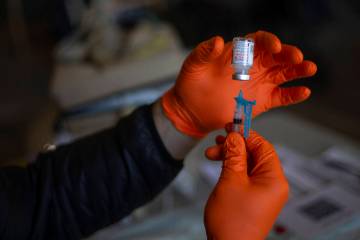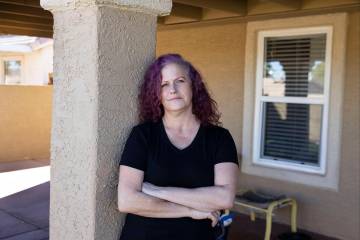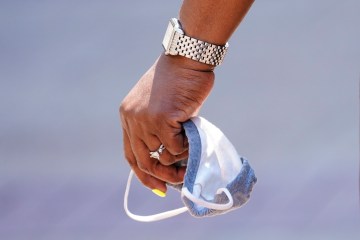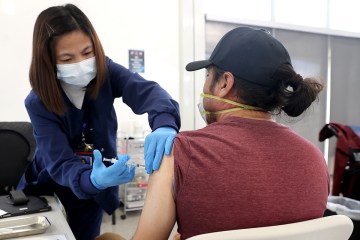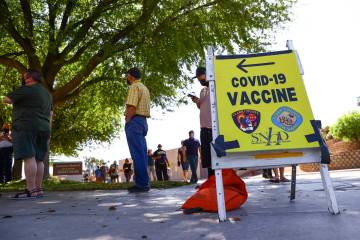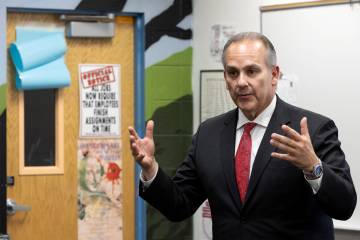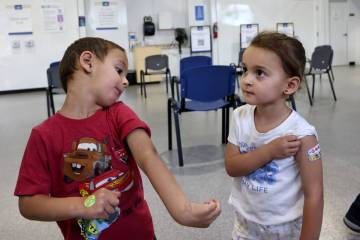Plan surfaces for reopening Clark County schools
A plan to reopen Clark County schools emerged ahead of schedule on Tuesday, with a proposal to have students attend school for face-to-face instruction two days a week and learn online three days a week.
According to documents posted ahead of Thursday’s Board of Trustees meeting, students in all grade levels will be divided into two cohorts, with Cohort A taking in-person classes Mondays and Tuesdays and Cohort B taking classes on Thursdays and Fridays.
A third option will be offered for students who wish to do distance learning full time, according to the documents.
Enhanced cleaning will take place between cohorts on Wednesdays and Fridays.
The news came days before an official plan is due in front of the Board of Trustees, which is set to hear the recommendations compiled by staff on Thursday. The item is listed only for discussion, with a vote to follow at the July 9 meeting before the plan heads to the state for final approval.
District representatives said Tuesday that the district will not comment on the reopening plan until it’s presented to the school board.
In addition to the staggered schedule, the district is considering a delayed start date of Aug. 24. The maximum capacity for all classrooms will be 18 students.
Under the proposal, elementary school students will take language arts, math, reading, social studies and science classes during face-to-face instruction, while taking art, music, P.E. and library time via online classes at home. Elementary students will eat breakfast and lunch in the classroom.
In middle school, yearlong courses will be condensed into one semester, with students taking only four courses in one semester: English, math, plus some combination of social studies, science, health, P.E. or electives.
High school courses also will be condensed to one semester, and students will only take four courses a semester, beginning their days at 7 a.m. and taking two 2-hour courses each day. They will eat lunch at the end of the school day at noon.
The district will seek a Department of Agriculture waiver to continue serving food at food sites for distance education days.
The revised school schedules also include a 30-minute break for staggered passing periods to ensure social distancing.
Transportation and Chromebooks
The presentation further includes a list of health and safety practices for schools, including requiring students and staff to wear face masks.
Transportation plans are still in development, according to the presentation, with a parent and guardian survey coming soon to determine the number of active riders. The district is determining whether it has enough buses to transport students under social distancing guidelines.
In between runs, bus drivers will be expected to disinfect handrails, seat tops and entrance doors, while a private contractor will disinfect buses nightly.
Another hurdle to clear is gathering and distributing enough Chromebooks, with 96,000 devices still needed, according to the presentation, at a cost of approximately $28 million more.
The total cost of the proposed plan is $84.6 million, with over half of that spent on obtaining enough Chromebooks and building out school infrastructure to provide 1:1 WiFi.
An additional $15 million will go toward personal protective equipment, and another $3 million will be spent on professional learning for teachers, substitutes and support professionals.
CCEA reaction
The Clark County Education Association on Tuesday also released a list of demands related to reopening schools, including ensuring COVID-19 testing for all employees returning to work, as well as follow-up tests later in the year and medical care for those who get sick.
Executive Director John Vellardita said one critical component missing from any reopening plans the union has seen is comprehensive testing that will allow 40,000 returning employees and 300,000 returning students to exist in a school space together. An option also is needed for employees who don’t feel comfortable returning to the classroom, he said.
Guidance also is missing on how teachers should juggle their classroom teaching with supervising and helping students who are learning at home, Vellardita added, as distance learning plans so far have only mandated taking attendance.
“You have a smaller class. You have them for two days. So what can you accomplish? And then do they slip, since they’re out of the classroom and doing distance learning?” Vellardita said. “They’re probably going to ask these teachers to be superhuman, teaching live and keeping track of the students doing distance learning.”
Overall, Vellardita said, he believes the plan is likely to change pending the outcome of the special legislative session and any additional financial cuts that may come down from the state.
“It’s a precarious situation. It depends on the funding. That’s what’s hanging over all these reopening plans,” he said. “But the district is trying to comply with the requirements.”
Other reactions
Across social media, many shared an immediate reaction of shock to the modified school week, with a common concern being how to find child care for elementary-aged children on their off days.
Rebecca Dirks Garcia, a Clark County School District parent and president of the Nevada PTA, said she was trying to figure out how to coordinate those logistics across multiple schools for her family.
“I have children who also had a very difficult time with online learning, and while I have confidence planned online learning will be different than emergency distance learning, I still know for two of my children it’s not a good fit, especially without significant supervision, which is hard if my husband and I are working,” Garcia said.
Garcia, who was a part of the district’s reopening working group but said she learned about the official plan on Tuesday, added that there was likely no perfect solution.
“How to reopen schools in a state with the largest class sizes in the nation and chronic underfunding is an overwhelming challenge,” she said.
Jessica Houchins, a school counselor, praised the plan to reduce class sizes and put blended learning to the test.
“There will always be negativity about a plan this large, but I’m happy with the outcome and hope that our community can pull together to figure out day care options for families that need it on the days kids aren’t physically in school,” Houchins said.
School leaders, meanwhile, learned about the plans while off their contracted hours. When they return on July 22, they will have approximately a month to put those plans in motion, while answering questions of how to enforce mask policies, how to supervise lunchtimes when teachers take their contracted breaks, and who will be responsible for enforcing distance learning.
In addition to all of the above, Frias Elementary Principal Pamela Lindemuth said she’ll need to find child care for her own children.
“If this is truly what we need to do, I want to do it well,” Lindemuth said, adding that her first step would be to survey parents about which schedule they’d prefer. “But we can’t do that if we’re finding out about things on social media.”
David Hudzick, principal of Piggott Academy of International Studies, added that even with schools’ best efforts, the schedules may not work for families with shift workers, casino workers or those who don’t know their weekly schedules ahead of time. He said the state also should consider extending the suspension of standardized testing, given the academic upheaval.
Tyrone Thompson Elementary Principal Robert Hinchliffe said the hardships extend to teachers, who might now face juggling their classes with finding child care of their own.
“It does not work in elementary schools,” Hinchliffe said. “We can’t teach sounds, speech (with masks). We can’t keep the students away from each other.”
More discussion on the reopening plan is expected Thursday.
Contact Aleksandra Appleton at 702-383-0218 or aappleton@reviewjournal.com. Follow @aleksappleton on Twitter.



